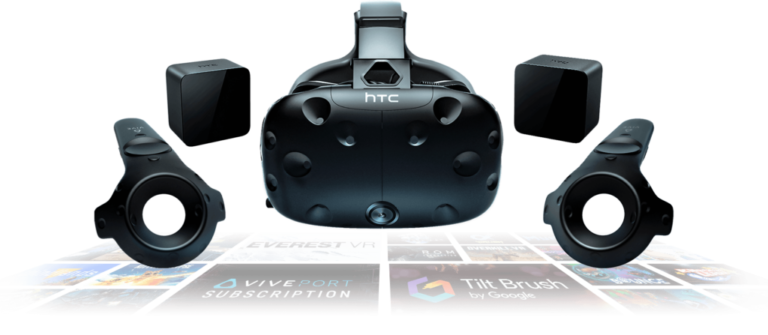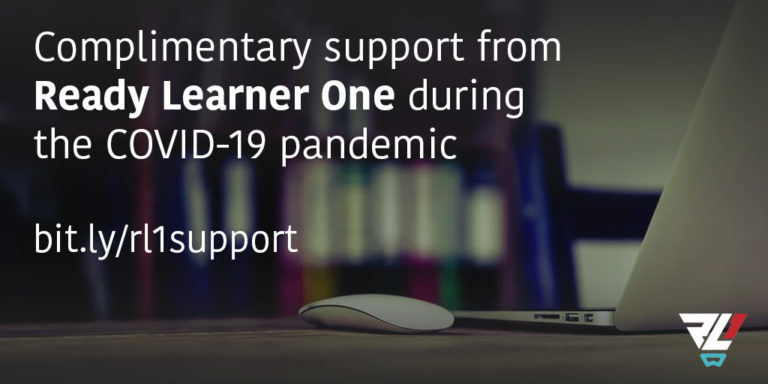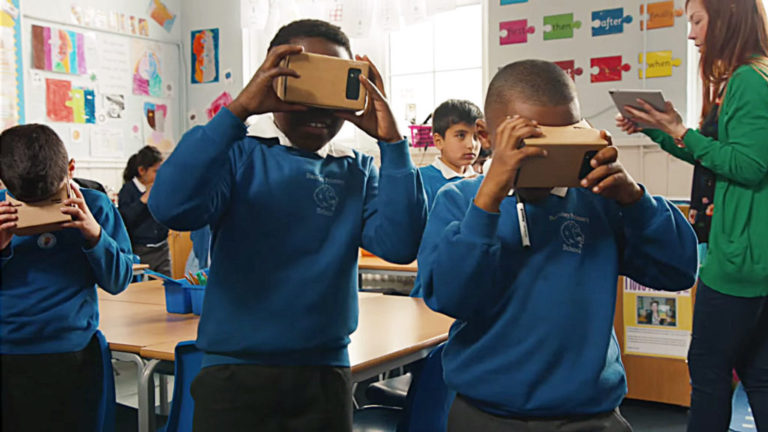Three weeks ago I helped the English Language Arts teachers in my building apply our Oculus Quests to their lesson plans for Anne Frank. It was one of the more powerful experiences of my career. Students were engaging with the material in visceral ways that they did not understand until they spoke with their teachers about it. They were immersed in the story, despite having little knowledge about Anne Frank and her life until that day.
Now, like most, I am teaching from home; our VR program is paused due to COVID-19 concerns. It makes sense. Putting a shared device over your eyes and near your mouth and nose could create a spread of a disease that we are all afraid of at this time. It makes sense, but I also worry about the future of what this means for VR devices in schools. VR already faces issues in the educational sphere: too costly, not enough educational experiences, the “gaming” argument, etc. and now we can add health concerns to the list. How do we overcome these issues?
Well, we look to the technology and its applications, and we project forward. Let’s start with Social Emotional Learning; it is such a crucial concept to all aspects of human interaction in and out of school. VR can exceed expectations for SEL in schools. Many students in my colleagues’ classrooms were able to identify how Anne Frank would have felt, explore her emotions in concert with the Anne Frank House VR experience, and then discuss them afterwards. Although reading a book or doing activities can help students importances of concepts like self-worth, empathy, and caring for others, VR can immerse learners in the process in just a few minutes. That is a truly powerful application of VR.

At the moment teachers worldwide are moving into distance learning and it is stretching a lot of teachers into a new way of teaching. Just a few minutes on #distancelearning or #athomelearning paints a picture of teachers in triage. Although the technology currently in vogue is low cost laptops like Chromebooks, in the future VR could easily help teachers have effective distance learning. AltSpaceVR, and other meeting based apps, are already helping lecturers and trainers hold meetings through VR, but it is not long before it could also be used to have a VR school experience with the teacher working with students in a VR space. Furthermore, Virtual Desktop allows users to do everyday learning tasks through VR. VR already can help to augment some of the main components of a classroom and in the future VR is only going to give more opportunities for teachers to help learners in a VR space.

Finally, the biggest argument against VR is cost and safety. Safety is a clear issue right now; sharing VR devices during COVID-19 is a dangerous and irresponsible idea. However, that safety issue is somewhat alleviated when we consider having a device for every student. In that case students are safer than if they were sharing, although most schools would still need to teach student responsible VR cleaning habits. If every student has their own device, then it must lead us to cost. Wouldn’t it be irresponsible for schools to give each student a VR device? Well at this point possibly. VR is still gaining traction in educational circles, but in a few years it will be a technology that is primed for educational use. With more prevalence, comes less cost. Already VR has shifted from being a technology outside the realm of school budgets due to needing a tethered computer and the costly headset, not to mention programs. However, my school with the help of two grants were able to get a full classroom set of Oculus Quests for just over $10,000. That still sounds like a lot of money, but compared to chromebooks or iPads, it is not that much more, and it is only going to get cheaper with better technology in the future.
Although COVID-19 is a dangerous issue and needs to be respected, VR in education is a future too rich with possibilities to ignore. When this crisis ends, innovative teachers and districts need to revisit VR as a technology that provides solutions to education’s current and future problems. If you are an innovative educator, the time is ripe to try out VR for yourself and see how it can be applied to the classroom in order to engage students in ways we have not seen before. Like me, it might lead to some of the best moments of your career.
Matthew Winters is a Google Certified English Language Arts Teacher / Edtech Coach. You can find him on Twitter at @TeacherWinters. More information on Matthew Winters and his work in education can be found here.





